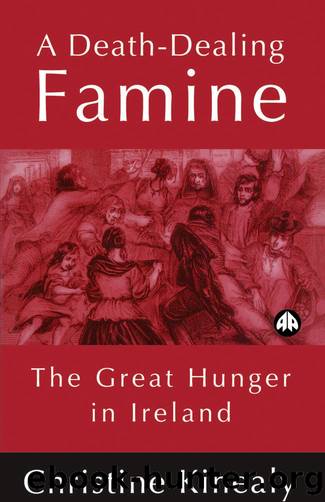A Death-Dealing Famine: The Great Hunger in Ireland by Christine Kinealy

Author:Christine Kinealy [Kinealy, Christine]
Language: eng
Format: epub
Tags: History, Europe, Ireland
ISBN: 9780745310749
Google: pWELdyf54HQC
Goodreads: 1765886
Publisher: Pluto Press
Published: 1997-03-20T08:02:02+00:00
CHAPTER 6
âThe Expatriation of a Peopleâ
In 1847, the potato blight was less extensive than it had been in the previous two years. This was fortuitous as, from the autumn of that year, a specially extended Poor Law was to be made responsible for both ordinary and extraordinary relief. As a consequence, it was hoped that each Poor Law Union would become financially self-supporting. The object of the government was to implement a policy whereby local resources would have the responsibility for meeting the cost of the local provision of relief.
The hopes of stability and economic recovery proved to be illusory. The 1847 harvest was poor. The crop yield was small due to the disruption caused by the relief works in the previous winter and the shortage of seeds for planting. In addition, the British economy was in the throes of an economic depression which had repercussions in the industrial sector in Ireland, most notably Ulster. The slump mobilised middle-class opinion within Britain to oppose further financial aid to the Irish destitute, especially those who reached the shores of England without skills, capital or good health. The rise in agrarian crime and the murder of a few Irish landlords were viewed as evidence of Irelandâs lawlessness. The small and unsuccessful nationalist uprising led by the Young Irelanders in July 1848 was interpreted as compelling confirmation of Irelandâs ingratitude to her political partners.
In 1848, starvation and disease were still destroying whole communities in Ireland. A widespread policy of evictions completed the destruction of the potato economies in parts of the south and west. Emigration became an important strategy for survival for those who had the energy or resources to leave the country. In the face of this continuing devastation, the government reluctantly announced that 22 unions were still officially âdistressedâ.
Increasingly, 1848 was marked by a series of polarisations. There were divisions between the east and west of the country; between landlords and tenants whose interests were separated by the system of taxation; between those who wanted a repeal of the Union and those who simply wanted food and shelter; within the Whig Party; between relief officials in Ireland who pleaded for more assistance to Ireland and those in London who ignored such demands; and divisions between Ireland and Britain, as the latter no longer believed that it had a duty to finance the Famine in Ireland.
Property Supporting Poverty
In the summer of 1847, Ireland had acquired a new Lord Lieutenant, the Earl of Clarendon, following the premature death of Lord Bessborough. His death and Daniel OâConnellâs in May of that year had created a power vacuum in Irish politics. Bessborough, although an ally of Lord John Russell, had become increasingly critical of the role of the Treasury in Famine relief. His loss was made all the more significant by the fact that it coincided with a new and significant shift in policy. From August, the Irish Poor Law was to be made responsible for providing relief to the âordinaryâ destitute and to the victims of the Famine.
Download
This site does not store any files on its server. We only index and link to content provided by other sites. Please contact the content providers to delete copyright contents if any and email us, we'll remove relevant links or contents immediately.
Craft Beer for the Homebrewer by Michael Agnew(18140)
Marijuana Grower's Handbook by Ed Rosenthal(3619)
Barkskins by Annie Proulx(3298)
Project Animal Farm: An Accidental Journey into the Secret World of Farming and the Truth About Our Food by Sonia Faruqi(3176)
The Plant Messiah by Carlos Magdalena(2881)
Red Famine: Stalin's War on Ukraine by Anne Applebaum(2872)
0041152001443424520 .pdf by Unknown(2783)
Organic Mushroom Farming and Mycoremediation by Tradd Cotter(2626)
In the Woods by Tana French(2530)
Beer is proof God loves us by Charles W. Bamforth(2370)
7-14 Days by Noah Waters(2360)
Reservoir 13 by Jon McGregor(2239)
Borders by unknow(2226)
Meathooked by Marta Zaraska(2220)
The Art of Making Gelato by Morgan Morano(2216)
Birds, Beasts and Relatives by Gerald Durrell(2175)
Between Two Fires by Christopher Buehlman(2163)
The 7 Habits of Highly Effective People: Powerful Lessons in Personal Change (25th Anniversary Edition) by Covey Stephen R(2137)
The Lean Farm Guide to Growing Vegetables: More In-Depth Lean Techniques for Efficient Organic Production by Ben Hartman(2096)
